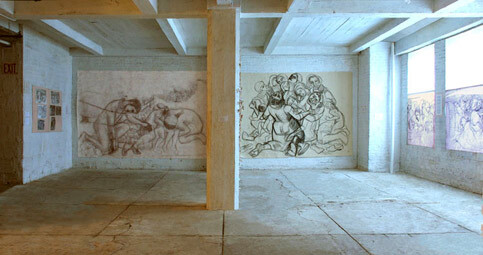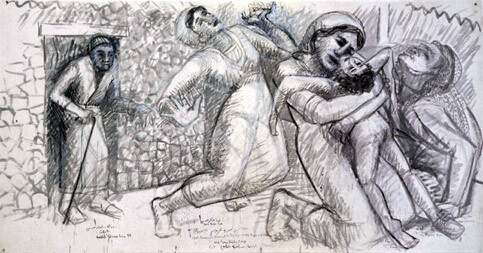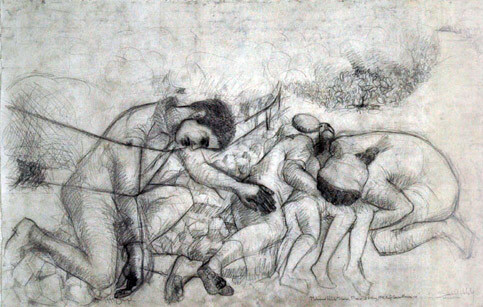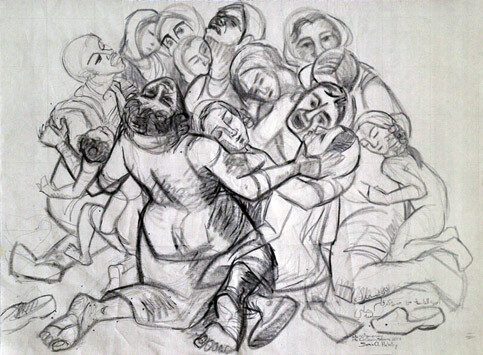The Electronic Intifada 30 October 2006

50th Anniversary exhibition at The Bridge Gallery in New York June 2006.
Fifty years ago, on October 29, 1956, 49 Palestinian residents of Kafr Qasem were murdered by Israeli border police who at that time were officially attached to the military. Countless more were wounded and left bleeding and unattended. Their families were unable to offer aid because of a 24-hour curfew lasting for some two days and three nights. Violation of the curfew was punishable by death.

In the following two days (while the families were thus imprisoned in their homes) the Israelis unceremoniously buried the victims without permission or the presence of witnesses. On the following morning, the unattended wounded who had helplessly lain in the streets were torn away from their deceased loved ones, thrown into trucks (not ambulances) and hauled off to hospitals. This deliberate massacre had been planned in advance to coincide with the Israeli and Anglo-French attack on the Suez canal.

The townspeople of Kafr Qasem organize an annual memorial event on October 29th which begins with speeches by the town elders followed by a march through the town to additional ceremonies at the martyrs cemetery. Later in the day an open house for the arts is organized at the town council headquarters. Poets, writers, and artists are invited to contribute to these events, thereby aiding the process of healing.
I attended such an event in 1999. I began interviewing survivors and continued the work in subsequent visits. My primary goal was to make a series of documentary drawings. These drawings fill the pages of this web treatise. Some documentary photographs from Kafr Qasem publications are also included.

I have feelings of great love for Kafr Qasem and its heroic residents. They bring tears to my eyes when I contemplate their tragic story. These recent events taught me a lot about sumoud (persistence). In 1948, Kafr Qasem had eighteen thousand dunums (a land measure). Amazingly, as much as thirteen thousand still remain. Perhaps this is because the Israeli government does not wish to call attention to this brutal massacre. Most other Palestinian Arab villages and towns have very little left of their traditional lands as the process of Israeli confiscation continues unabated. In 1956, Kafr Qasem was a village of approximately 1500 residents. Now Kafr Qasem has become a town of over 15,000. In Kafr Qasem, 60 percent of residents once lived off of their land; currently, 80 percent are exploited laborers.

Israeli taxation without a proportional return of social services, further adds to the difficulties Kafr Qasem residents. Civil equality is a dream. There is no level of life where Israeli policy does not dictate limitations intended to reduce Palestinian Arabs to poverty or promote their emigration. A mandatory and unfair educational curriculum, implemented by the Israeli government, reduces childrens’ pride and promotes ignorance.
It’s the essence of sumoud that Kafr Qasem resists, Palestine resists, Iraq resists, and Lebanon resists.
Related Links
Samia Halaby is a Palestinian artist based in the U.S.





